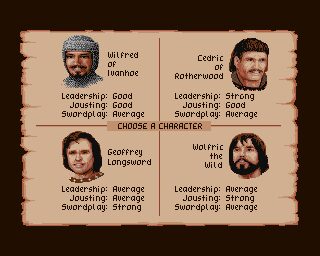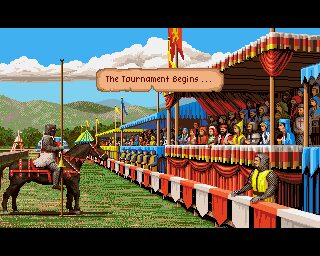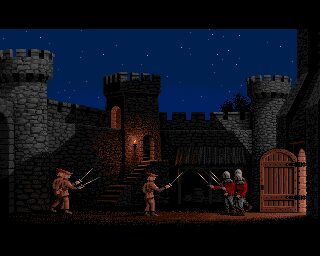Defender of the Crown is a strategy game created by Cinemaware and released in November 1986 for the Amiga. Designed by Kellyn Beck, this title is one of the first and most influential Amiga games ever.
Set in medieval England during a period of internal strife following the death of a king, the game cast players as a Saxon nobleman fighting to reclaim the kingdom from Norman control. While the premise may sound like a typical strategy game, Defender of the Crown was anything but ordinary for its time.
What made the game revolutionary was its unprecedented visual presentation. The Amiga version showcased richly detailed, hand-drawn artwork, stunning color gradients, and animations that were closer to film or illustrated books than anything previously seen in games. It wasn’t just technically impressive — it was cinematic. Defender of the Crown was one of the first games to fully utilize the multimedia capabilities of the Amiga, including high-resolution graphics and digitized sound. It wasn’t an exaggeration to say that this game alone helped justify the Amiga’s role as a serious gaming platform and not just a computer for productivity or hobbyist programming.
Gameplay combined elements of turn-based strategy, action, and resource management. Players would manage armies, besiege castles using catapults, engage in sword fights, and even participate in jousting tournaments. The strategic layer, where players expanded their territory across England, was accessible but slightly shallow by later standards. The real attraction was in the immersive event-driven sequences — from rescuing damsels to dramatic castle sieges — each presented with lavish art and atmosphere.
While later strategy games like Lords of the Realm or Total War would refine the blend of tactics and management, Defender of the Crown was among the first to blend multiple genres into a cohesive narrative-driven experience. It was cinematic not just in presentation, but in how it made players feel like participants in an unfolding epic.
Despite some criticisms about difficulty balance and a relatively short campaign, Defender of the Crown became a major hit and was ported to numerous platforms. However, none of the versions could quite match the impact of the original Amiga release, which remains the definitive experience. It set the tone for Cinemaware’s future titles and marked a turning point in video game design — a shift toward storytelling, atmosphere, and visual ambition.













